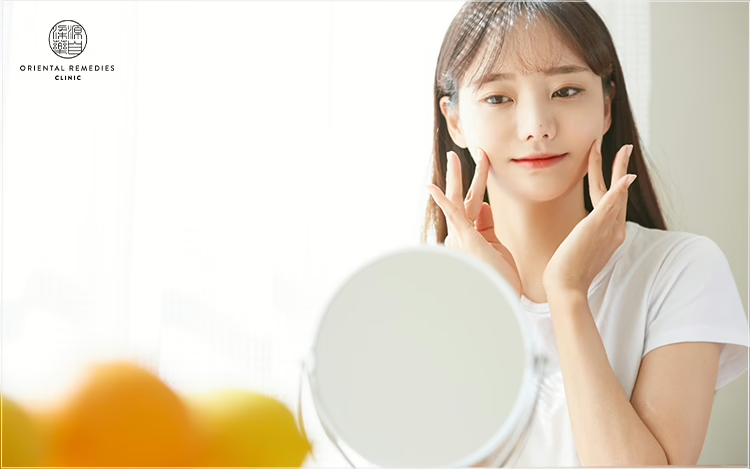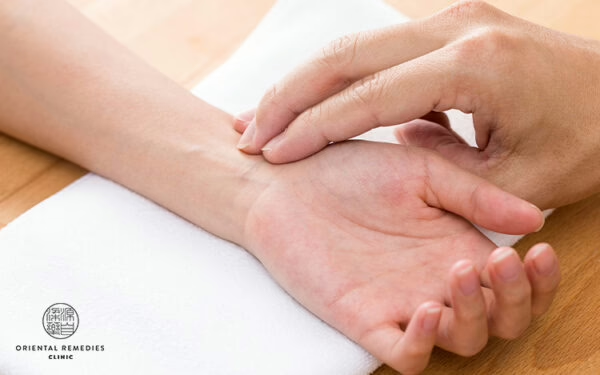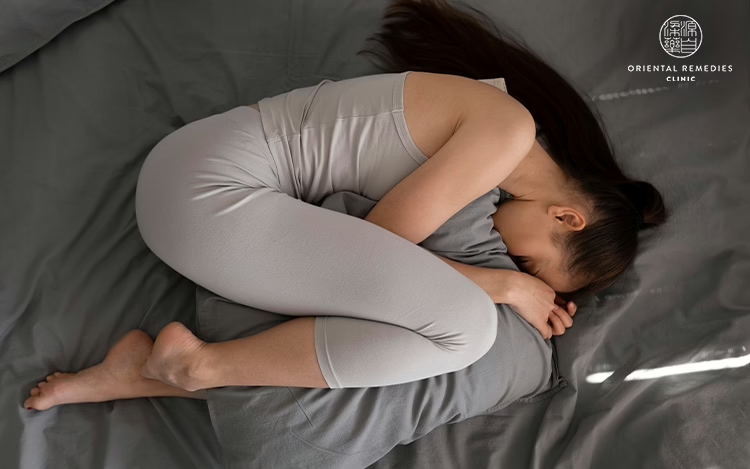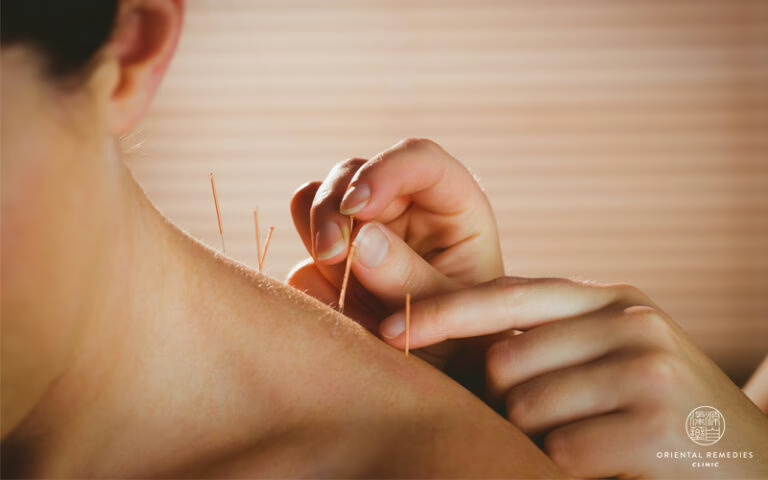TCM Treatments for Brighter & Healthier Skin

Link copied! In the pursuit of glowing and radiant skin, we often turn to Western medicine for solutions. But did you know that Traditional Chinese Medicine (TCM) has been quietly transforming complexions for centuries? Beyond just treating ailments, TCM offers a holistic approach to skincare, addressing not only the symptoms but also the underlying imbalances that cause skin issues. In this blog, we will explore how TCM clinics in Singapore utilise traditional and tech-enhanced therapies to unlock the secrets to brighter and healthier skin. Facial Acupuncture: The Art of Rejuvenation A common misconception is that acupuncture can only be done on the body. However, facial acupuncture exists and is a TCM treatment that has gained popularity for its ability to enhance skin health and combat various skin issues. One of the key benefits of facial acupuncture is its ability to improve blood circulation. By stimulating specific acupuncture points on the face, blood flow increases and allows for better oxygenation and nourishment of skin cells. This process promotes cell regeneration and repair, resulting in a smoother and more youthful appearance. Additionally, facial acupuncture helps to strengthen facial muscles, addressing concerns like sagging, lack of elasticity, and fine lines. The gentle stimulation of these muscles can lift and tone the face, naturally restoring its youthful contours without the need for invasive procedures. Learn more: Is Facial Acupuncture the new Botox? Electro-Lymphatic Therapy (ELT): Unravelling Beauty From Within ELT is another impressive tech-enhanced treatment that focuses on the lymphatic system — a crucial component of our body’s waste removal process. This therapy stimulates lymphatic flow and drainage which effectively alleviates inflammation to improve skin issues like acne and eczema flare-ups. Better lymphatic circulation also reduces water retention which has depuffing effects. Toxin build-up in the lymphatic system can also cause poor blood circulation to the face and result in skin issues like pigmentation, dullness and sagging. When toxins are properly cleared from the face and neck area through ELT, it allows better blood circulation and easier absorption of skincare applied to the area to address skin concerns more effectively. Learn more: So you’ve booked your first Electro-Lymphatic Drainage Therapy (ELT) appointment. What next? The Healing Power of TCM Herbs In TCM, herbs are regarded as powerful allies in the journey towards healthier skin. Qi and Blood-nourishing herbs like Angelica Root are paired with herbs that promote blood circulation, such as Szechuan Lovage Root and Suberect Spatholobus Stem. This potent combination works to enhance complexion and radiance, addressing issues like dullness and uneven skin tone. Moreover, TCM employs heat and dampness-clearing herbs to combat acne — an issue commonly associated with excess heat in the Stomach meridian and dampness resulting from weakened Spleen function. Herbs that tonify and invigorate Qi can help to strengthen the skin barrier, alleviating inflammation and preventing the formation of acne. While TCM offers a treasure trove of herbal remedies, exercising caution and wisdom when incorporating them into your health regimen is crucial. If you are considering TCM treatments involving herbs, it is essential to seek guidance from registered physicians at reputable TCM clinics in Singapore. TCM’s Holistic Approach to Beauty While Western medicine has its merits, TCM offers a time-honoured path to healthier and brighter skin the natural way. Here at Oriental Remedies Group, a TCM clinic in Singapore, our physicians are committed to embracing the wisdom of TCM and technology to help patients achieve their skin goals. Get in touch with us to find out more! Note: All words in Italics refer to the TCM organ-system and not the anatomical organ referenced in Western medicine. The content on this page is for information and educational purposes only. Such medical information may relate to disease, injury, drugs, and other treatments, medical devices, and/or health products. Medical information does not amount to advice, and if advice is needed an appropriate professional help should be sought. The disclaimer asserts that no warranties or representations are given in respect of the medical information and that the website operator should not be held liable if a user suffers any injury or loss after relying upon the medical information All wellness assessments and technology-enhanced therapies using wellness device(s) are intended for use only for general well-being purposes or to encourage or maintain a healthy lifestyle, and it is not intended to be used for any medical purposes (such as detection, diagnosis, monitoring, management or treatment of any medical condition or disease). Any health-related information provided by these devices should not be treated as a medical advice. Please consult a physician for any medical advice required. RELATED TOPICS YOU MIGHT ALSO LIKE
The Evolution of TCM: From Traditional Methods to New Tech-Enhanced Wellness Assessments & Therapies

Link copied! Traditional Chinese Medicine (TCM), a practice steeped in history, has captivated the hearts and minds of not only Eastern societies but also those in the West. Just as humans constantly evolve and progress, TCM has also undergone transformations throughout its history, continuously reinventing itself to adapt to the ever-changing needs of humanity. While the traditional elements and time-tested methods of TCM have remained steadfast, a new wave of exploration has also unfolded. More physicians and researchers are now delving into the possibilities of intertwining ancient wisdom with technology. The result is a fusion of the old and the new, where tech-enhanced assessments and therapies have revolutionised TCM clinics in Singapore and worldwide, offering patients bespoke treatments tailored to their individual needs. Discover the evolution of TCM, from its ancient origins to remarkable advancements that have reshaped the landscape of holistic wellness in this article — keep reading to find out more. Part 2 – Everything You Need to Know About TCM 2.1 Introduction to TCM and Its History TCM traces its origins back to the shamanistic era of the Shang dynasty, flourishing between 1766 and 1122 BC. It was during this time that the foundations of TCM began to take shape, with healers and practitioners delving into the mysteries of the human body and its connection to the natural world. Over the following centuries, TCM underwent a gradual evolution, incorporating new discoveries, refining its theories, and expanding its repertoire of therapies. As its effectiveness became increasingly evident, TCM garnered widespread recognition as a holistic and natural medical therapy within China. Its reputation then extended far beyond its borders as years went by, captivating the curiosity and interest of countries around the globe. In the present day, TCM continues to thrive, often complementing Western medicine to provide all-rounded care to patients. One example of this integration is the use of Chinese herbs prescribed by TCM physicians as post-surgical supplements to expedite recovery and support the body’s healing. This harmonious collaboration between TCM and Western medicine emphasises the recognition of the unique strengths that each system brings to the table. However, it is important to note that TCM diverges from Western medicine in fundamental ways. While Western medicine primarily focuses on treating specific symptoms and diseases, TCM takes a holistic approach to health and wellness. At the core of TCM philosophy is the belief that our well-being is intricately connected to the balance of Qi, the vital life force that flows through our bodies. TCM physicians strive to understand and harmonise the intricate interplay between the physical, mental, emotional, and spiritual aspects of our being. Central to TCM’s approach is the restoration of balance between Yin and Yang, the opposing yet complementary forces that underpin all aspects of existence. Imbalances or disruptions in this delicate combination are believed to impede the flow of Qi, resulting in illnesses and ailments. TCM therapies such as acupuncture, herbal remedies, and dietary adjustments are designed to rectify these imbalances, thereby promoting the body’s innate capacity for self-healing. As we delve deeper into the realm of TCM, we will also explore its perspective on illnesses and ailments. 2.2 TCM’s Perspective on Illnesses and Ailments TCM offers a unique perspective on illnesses and ailments, rooted in the belief that maintaining the delicate balance between Yin and Yang is crucial for optimal health. To restore balance, TCM focuses on achieving equilibrium between the internal organs and the external elements: earth, fire, water, wood, and metal. Each element corresponds to specific organs and bodily functions, and an imbalance in any of these elements can have a profound impact on overall health. TCM therapies aim to identify and address these imbalances by removing obstructions and promoting the flow of Qi, allowing the body’s natural healing mechanisms to take effect. But what truly sets TCM apart is its preventive approach to healthcare — rather than solely treating existing illnesses, TCM highlights the importance of maintaining wellness and preventing diseases from taking root. Through therapies like acupuncture, moxibustion, and lifestyle modifications, TCM seeks to enhance the body’s resilience and bolster its natural defences. This proactive approach to health empowers individuals to take charge of their well-being and cultivate a state of balance that supports long-term vitality. While TCM does not replace conventional or allopathic treatment, particularly for serious conditions, it is effective when used in conjunction with Western medicine, forming an integrative approach that can enhance the overall treatment plan. Collaboration between healthcare professionals from both disciplines allows patients to receive comprehensive care that combines the strengths of two systems, potentially leading to improved outcomes and a higher quality of life. It is also important to exercise caution and communication when integrating TCM with Western medicine. Some TCM herbal medicines may interact with or have toxic effects when combined with certain Western medications. It is, therefore, vital to inform both your Western medicine doctor and TCM physician about all the treatments and remedies you are using. This ensures that potential interactions and contraindications are identified, and appropriate adjustments can be made to your treatment plan, prioritising your safety and well-being. With a deeper understanding of TCM, continue reading to gain insight into the potential of TCM to restore balance, prevent ailments, and contribute to overall well-being. 2.3 Traditional TCM Treatments and Their Benefits TCM encompasses a diverse range of therapies, each offering unique benefits and contributing to the restoration of balance. Acupuncture One of the most well-known and widely practised TCM treatments, acupuncture involves inserting thin needles into acupoints on the body to stimulate the flow of Qi and restore balance. This therapy has been used for centuries to address a wide range of diseases and problems, including chronic and acute pain, digestive disorders, respiratory conditions, stress-related ailments, and even infertility. Acupuncture is known for its ability to alleviate pain, promote relaxation, and enhance overall well-being. Learn more: 6 Common Myths About Acupuncture Debunked Cupping Cupping involves placing heated glass cups on the skin to create a suction effect. This
Supporting Women’s Health With TCM

Link copied! As women, we navigate a unique journey of physical and emotional changes throughout our lives. From the delicate dance of hormones during our menstrual cycle to the transformative stages of pregnancy and menopause, our bodies deserve special care and attention. Traditional Chinese Medicine (TCM) offers a holistic approach to health and wellness, focusing on restoring balance and harmony within the body. For women in Singapore seeking natural remedies for various health issues, TCM provides a time-tested solution. In this article, we will explore how TCM supports women’s health throughout different life cycles, from menstruation to menopause. Keep reading to find out more. Women’s life cycles 1. Menstrual cycle The menstrual cycle can bring various challenges, including the late onset of first menses, irregular periods, menstrual cramps, and ovulation bleeding. TCM offers effective solutions by regulating the menstrual cycle, reducing pain, and alleviating discomfort. Through herbal remedies, acupuncture, and dietary adjustments, TCM helps restore harmony to the body, promoting a healthier and more regular menstrual cycle. 2. Pre-pregnancy, pregnancy and post-pregnancy Preparing the body for pregnancy is crucial for both men and women. TCM for fertility plays a vital role in this stage, assisting couples in their journey towards conception. By addressing hormonal imbalances and optimising reproductive health, TCM enhances the chances of successful conception. TCM can help couples trying to conceive naturally and those undergoing assisted reproductive technology treatments like IVF. Acupuncture is often used to promote ovulation in preparation for egg retrieval procedures and is used to enhance the success of implantation after embryo transfers. During pregnancy, TCM can also help alleviate early symptoms of miscarriage, lower back pain, and general discomfort. Post-pregnancy, TCM provides support with practices like confinement rituals, lactation support, and treatments such as acupuncture to strengthen the body’s recovery and alleviate discomfort from conditions like mum’s wrist or backache that arise from caring for their newborns. 3. Menopause As women enter menopause, they experience a range of symptoms such as irregular periods, heavy flow, disrupted cycles, hot flashes, and night sweats. TCM offers effective relief by balancing hormones and improving overall well-being. Herbal remedies, acupuncture, and lifestyle adjustments tailored to each individual can help manage these symptoms, allowing women to embrace this transformative stage with greater ease and comfort. Common health conditions that affect women From menstrual cramps and irregular periods to post-menopausal syndrome and infertility, women often face a range of health concerns. While Western medicine provides valuable diagnostic tools and treatments, TCM for women’s health offers a complementary and holistic approach to address these conditions. 1. Menstrual cramps and irregular periods Menstrual cramps and irregular periods are common complaints among women and TCM recognises that these issues may be manifestations of imbalances within the body. By considering the body as an interconnected system, TCM aims to restore harmony and regulate the menstrual cycle. Learn more: Physician’s Guide To Manage And Relieve PMS 2. Post-menopausal syndrome As women transit into menopause, they may experience a range of symptoms collectively known as post-menopausal syndrome. TCM for menopause approaches post-menopausal syndrome by seeking to balance the body’s Yin and Yang energies. 3. Infertility Infertility is a deeply personal and emotionally challenging issue that many women face. Western medicine often diagnoses infertility as a result of hormonal imbalances, polycystic ovary syndrome (PCOS), endometriosis, uterine fibroids, or ovarian cysts. Whereas TCM for fertility offers a comprehensive and individualised approach to address the underlying causes by focusing on optimising the body’s overall health, balancing hormones, improving circulation, and supporting reproductive organs. Learn more about TCM for fertility:Improve your IVF Success Rate With AcupunctureWhat is Cold Womb Syndrome – are you suffering from it? 4. Vaginal infections or irritation Vaginal infections or irritations, such as yeast infections or bacterial vaginosis, can cause discomfort and disrupt a woman’s daily life. While it is recommended to seek the advice of a Western doctor for prompt relief, TCM can play a supportive role in preventing recurrence and maintaining vaginal health in the long run. TCM treatments often help strengthen the body’s immune system and balance its natural flora. 5. Urinary tract infections (UTI) UTIs are a common issue among women, causing pain and discomfort. It is advisable to consult a Western doctor for prompt diagnosis and treatment, as UTIs can progress quickly. However, TCM can be used in conjunction with Western medicine to support the body’s healing process and prevent recurrent infections. TCM for women’s health focuses on strengthening the body’s immune system, promoting urinary tract health and restoring balance within the body. How TCM and tech-enhanced therapies work hand in hand TCM has long been revered for its holistic approach to well-being, and now, advancements in technology enhance its effectiveness in addressing various women’s health issues. Learn more: A TCM Experience Like No Other: 6 Tech-Enhanced Assessments & Therapies 1. Menstrual-related issues Herbal medications tailored to individual needs can be formulated to correct imbalances, primarily focusing on regulating the Liver and Kidney functions while invigorating the Blood and Qi. Acupuncture promotes the flow of Qi and strengthens vital organs involved in the menstrual cycle. For conditions related to coldness or Blood stagnation such as Cold Womb Syndrome, therapies like moxibustion and tech-enhanced therapies like Far-Infrared (FIR) Therapy can be employed. Moxibustion uses heat from burning mugwort to warm specific acupuncture points, while FIR therapy utilises gentle heat to penetrate deep into tissues, improving blood circulation and alleviating menstrual discomfort. Electro-Lymphatic Therapy (ELT) is another tech-enhanced approach that can benefit women with inflammatory conditions like endometriosis, PCOS, uterine fibroids, or cysts. ELT improves lymphatic circulation and drainage, reducing inflammation, and enhancing blood circulation, leading to better menstrual flow and overall well-being. 2. Pregnancy-related issues Herbal medications can be tailored to recondition the body’s imbalances, strengthen the Kidney and womb, and improve blood circulation to support uterine lining growth for successful implantation. Specific herbs may also be prescribed to prevent miscarriage, while confinement herbs aid in postpartum recovery by strengthening the body and replenishing blood loss. Acupuncture can support assisted reproductive
Relieving Menstrual Cramps with TCM

Link copied! Menstrual cramps are a common problem experienced by many women during that time of the month. They can range from mild discomfort to severe pain, sometimes making it difficult to carry out daily activities. While over-the-counter pain medications are able to provide temporary relief, they do not treat the root of the problem. Traditional Chinese Medicine (TCM), on the other hand, is a natural alternative to managing menstrual cramps and targets the underlying causes of the pain. Keep reading to explore how TCM for women’s health can effectively relieve menstrual cramps and promote overall wellness, helping women to enjoy a higher quality of life. TCM’s view on menstrual cramps TCM views Menstrual cramps as a result of an imbalance of Qi and Blood in the body, which also affects the functions of vital organs like Kidney, Liver and Spleen. To provide patients with long-term relief from menstrual cramps, TCM practitioners work to identify and address the root cause of the condition. This often involves a holistic approach that considers the patient’s overall health, including their diet and emotional state. Kidney Qi deficiency The Kidney organ system plays a critical role in regulating the menstrual cycle and promoting reproductive health in women. When Kidney Qi is deficient, it leads to imbalances that can result in irregular periods, painful periods and heavy bleeding. Kidney Qi deficiency can be caused by a variety of factors, including genetic predisposition and chronic illness. However, TCM also recognises the role of lifestyle factors in the development of Kidney Qi deficiency — chronic stress and a poor diet are some contributing factors. Qi and Blood deficiency The Chong and Ren meridians are two important channels in the female body that are responsible for regulating the menstrual cycle and nourishing the reproductive system. The Chong meridian is responsible for nourishing the uterus while the Ren meridian is responsible for regulating the menstrual cycle. When Qi and Blood are deficient, they are unable to provide proper nourishment to the Chong and i meridians, which can compromise their functions and lead to menstrual cramps. The Spleen is also an important organ in TCM as it helps to digest food and produce Qi and Blood that are used for vital functions in the body. Irregular meals and overconsumption of cold drinks or cooling food can lead to Spleen deficiency. This affects the function of the Spleen in producing Qi and Blood for the body, which results in the womb having insufficient Blood for menstruation leading to light flow, irregular periods and menstrual cramps. Liver Qi stagnation In TCM for women’s health, the Liver plays a critical role in regulating the female menstrual cycle. It is responsible for regulating the flow of Qi and Blood throughout the body, including the Chong and Ren meridians that are responsible for nourishing and regulating the reproductive system. When Liver Qi gets stagnant, it can lead to imbalances that will result in painful periods, irregular periods and blood clots, hindering a healthy menstrual cycle. Coldness or Dampness Both Coldness and Dampness are common pathogenic factors that can affect the body and cause various health issues, including menstrual cramps, according to TCM. They obstruct the flow of Qi in the body and compromise the circulation of blood, leading to the formation of blood clots and other menstrual irregularities. TCM treatments for menstrual cramps TCM for women’s health utilises both traditional and tech-enhanced treatments to restore balance and harmony in the body, promote healthy blood circulation, and alleviate pain and discomfort. Acupuncture Acupuncture involves the insertion of fine needles into specific points on the body to stimulate the flow of Qi and Blood. It targets the Kidney, Liver and Spleen, Chong and Ren meridians, in particular, to regulate the menstrual cycle, alleviate pain and discomfort, and promote overall health and wellness. Learn more: 6 Common Myths About Acupuncture Debunked Herbal medications TCM practitioners may prescribe herbal medications to recondition the body and rectify imbalances. For example, they may recommend herbs that nourish deficiencies, dispel Coldness and eliminate Dampness, which can contribute to menstrual cramps. Additionally, strengthening the Kidney and Liver, which are important for menstrual cycles, can help promote healthy blood circulation and alleviate menstrual cramps. Electro-Lymphatic Therapy (ELT) As technology advances, TCM for women’s health has also adopted new tech-enhanced therapies to achieve quicker and longer-lasting results. ELT is one of them and is a non-invasive therapeutic modality that promotes lymphatic flow and drainage which encourages better blood circulation in the body. For women suffering from conditions such as endometriosis or uterine fibroids, which cause inflammation and menstrual cramps, ELT can reduce inflammation efficiently to help alleviate your discomforts. Negative Ion Therapy Negative ion therapy is a type of therapy that uses negatively charged ions to promote wellness. The therapy is used to enhance TCM treatments by improving cell metabolism and cell rejuvenation, resulting in healthier red blood cells. This addresses blood deficiency and promotes blood circulation to alleviate menstrual cramps. Learn more: Preparing For Your First Negative Ion Therapy Tips for a painless menstrual cycle Many women experience menstrual cramps and discomfort during their monthly cycle. While some level of discomfort is normal, there are several tips and lifestyle changes that can help to alleviate pain and promote a painless menstrual cycle. Here are some simple habits to adopt, according to TCM. Exercise regularly to improve Qi flow Low-impact exercises such as yoga and pilates can help to improve Qi flow throughout the body, preventing stagnation in the meridians which often lead to menstrual cramps. Avoid cold drinks and food Cold food and drinks can constrict the blood vessels and slow down the flow of Blood and Qi in the body. Hence, make an effort to avoid consuming cold food and drinks, and this includes food cooling in nature, such as salad and sashimi. Keep the belly and feet warm Wear socks to sleep and clothes that do not expose your belly to prevent coldness from entering the body. Using a heating pad
6 Common Myths About Acupuncture Debunked

Link copied! There is so much more to Traditional Chinese Medicine (TCM) than meets the eye. The practice is deeply rooted in the belief that good Qi flow keeps an individual’s mental, physical and emotional state balanced, promoting overall health in return. Acupuncture, in particular, is a TCM therapy with approximately 2,000 years of history that has skyrocketed in popularity over the years. This ancient practice is known for its ability to create or restore Qi flow through the body for improved health and even rapid pain relief. Effective for a variety of conditions, acupuncture helps with issues ranging from chronic bodily pains to digestive problems like gastritis, common sleep disorders like insomnia and even emotional woes such as anxiety. Despite being a renowned TCM therapy, there are still myths surrounding acupuncture. If you are feeling apprehensive about going for acupuncture, these myths debunked will hopefully convince you to take a leap of faith – keep reading to find out more. Myth 1: Acupuncture is painful One of the most common misconceptions about acupuncture is that it is painful since it involves the insertion of needles into acupoints of the body. On the contrary, very thin needles are used and you will usually only feel a slight prick and tingling. Most people feel at ease during an acupuncture session once the needle passes through the skin’s pain receptor, so there is no need to worry about any unbearable discomfort. Any soreness and pressure will also be relieved when Qi flow is established, usually shortly after the insertion of the needles. However, in the unlikely event that you experience pain or discomfort, do not hesitate to sound it out to your TCM physician. Learn more: Is Acupuncture Painful? Myth 2: Acupuncture is only effective in treating pain Although acupuncture is most commonly known as a TCM therapy to provide pain relief, it is, in fact, a versatile treatment that has way more benefits than that. Acupuncture can also boost fertility, improve insomnia, alleviate depression and anxiety, and aid in weight loss just to name a few. Speak to your TCM physician to find out if acupuncture is right for you. Myth 3: Acupuncture is accompanied by bad side effects The good news is unlike taking medications and undergoing invasive medical procedures, acupuncture promotes the body’s natural healing ability through enhancing Qi flow, and is generally safe with minimal and short-term side effects. You can expect to feel some soreness or see light bruising but these side effects should resolve on their own within a few hours or days. It is also important that you visit a trained and certified TCM physician in Singapore for acupuncture sessions for greater peace of mind. Myth 4: One session of acupuncture is sufficient While you will see and experience the benefits of acupuncture after just one session, consistency is key for optimum and longer-lasting results. Your TCM physician will be able to advise you on the frequency and duration based on your unique needs and it is advisable to stick to them. Once you have achieved your health goals, you should be able to slowly reduce the number of acupuncture sessions. Myth 5: Acupuncture is the same as dry needling Both acupuncture and dry needling require the insertion of needles but their similarity stops there. They are two different therapies done by different practitioners – acupuncture focuses on stimulating the acupoints on meridians to promote overall health while dry needling focuses on trigger points for muscle release. Go for acupuncture if you are looking for a holistic approach to treating a wide range of conditions. Myth 6: Acupuncture is not backed by science Another common misconception about acupuncture is that it is an ancient folk practice not backed by science. While more research still has to be done, some studies have shown that acupuncture may be helpful for many pain conditions ranging from neck pain to knee pain arising from osteoarthritis. This could be thanks to the effects on the tissues where the needles are inserted. Get acupuncture done in Singapore at Oriental Remedies Group At Oriental Remedies Group, our TCM physicians are trained and have years of experience under their belts in providing acupuncture for patients suffering from a wide range of conditions. Book an appointment today to experience the benefits of acupuncture for yourself! Note: all words in Italics mentioned henceforth refer to the TCM organ system and not the anatomical organs/terms referenced in western medicine. Disclaimer: The information on this page is for information and educational purposes only. Such medical information may relate to disease, injury, drugs and other treatments, medical devices and/or health products. Medical information does not amount to advice, and if advice is needed an appropriate professional help should be sought. The disclaimer asserts that no warranties or representations are given in respect of the medical information, and that the website operator should not be held liable if a user suffers any injury or loss after relying upon the medical information. All wellness assessments and technology-enhanced therapies using wellness device(s) are intended for use only for general well-being purposes or to encourage or maintain a healthy lifestyle, and it is not intended to be used for any medical purposes (such as detection, diagnosis, monitoring, management or treatment of any medical condition or disease). Any health-related information provided by these devices should not be treated as a medical advice. Please consult a physician for any medical advice required. Please consult a physician for any medical advice required. RELATED TOPICS YOU MIGHT ALSO LIKE